
Shi Potian talks about Zisha: What is the standard of a good Zisha teapot?
Share
1 . Smoothness and tightness of the flap
After getting a purple sand teapot, turn the lid gently. If there is no blockage during the process of turning the lid, it means that the first level has been passed. Due to the characteristics of the purple sand, there will be some gaps between the lids, but these must be within the normal range. The density of the mouth cover we are talking about is based on whether the tea overflows when pouring water. It is normal for a little water to overflow.

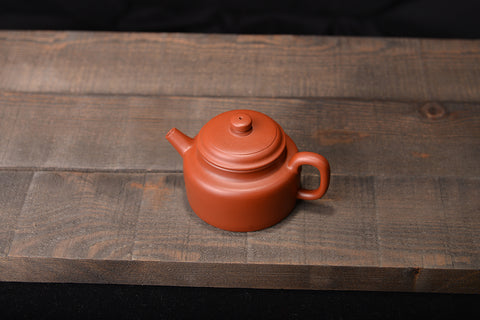
2. The smoothness of the water flow and the decisiveness of the water cut-off
Due to different pot types, the roundness of the water may not be the same, but the fluency will not change due to the pot type. Cutting off the water will not be decisive due to the different types of pots, but after the action of cutting off the water, there may be a small amount of water rushing out of the spout along with the momentum, which is acceptable. Of course, it is best not to drip out.

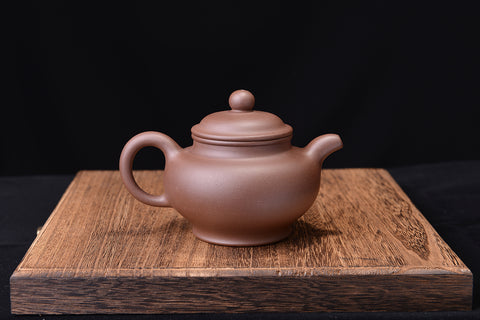
3. Pot ventilation
Blow to the spout with your mouth, and put your finger on the hole of the pot. If there is breath coming out of the hole, it means that the ventilation of this pot is very good. The degree of ventilation, the smoothness of water discharge and the decisiveness of water cut-off are the same. If you get the pot on the spot, you can simply blow on the spout to identify it.

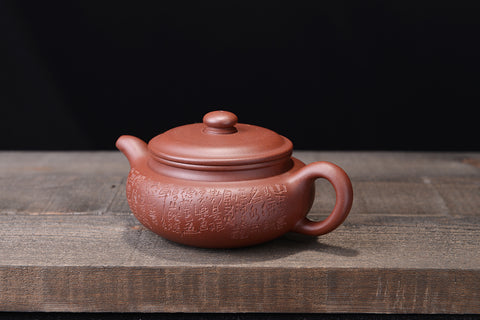
4. Identification of purple clay
In traditional Chinese medicine, there are four diagnostic methods: hope, smell, ask, and cut. To identify purple sand mud, you can use the four methods of looking, smelling, listening, and cutting.
1) Look: Although the real purple sand clay is colorful, it is not bright, it has a dim light, and it is not bright. We can "look" to see if the color of the purple sand clay is too bright or shiny.
2) Smell: New pots generally only have dusty fire, but no other smell. After a little soaking, the teapot will have a light tea fragrance.
3) Listening: Generally, the lid of the pot is used to lightly draw over the mouth of the pot. If it is a real purple sand pot, the sound should be sonorous and crisp like jade.
4) Cutting: Touch the teapot with your hands. It may be a little dry just out of the kiln. This is normal, and it will become jade-like after being cultivated. What we call "cut" is actually combined with "look". The surface of a real purple clay teapot looks grainy and uneven, but it feels smooth to the touch.
Combining the four methods, you can tell whether it is authentic purple sand mud, or it is mixed with chemical mud or mud after makeup.
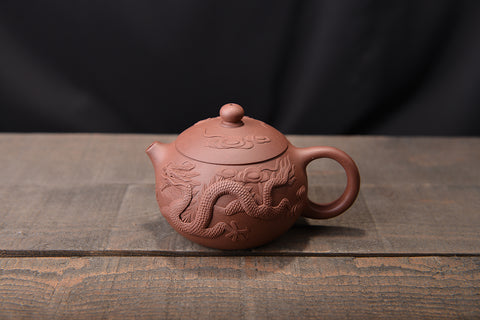

4. The workmanship of the pot
1) The harmony of the pot body proportions. Zisha teapots pay great attention to the harmony of the proportions of each part. Only on the basis of the harmony of proportions can the three points 1 , 2 and 3 be realized. First of all, check whether the spout, the handle of the pot, and the handle are three points and one line. Secondly, look straight at the front of the teapot, check whether the spout and handle are at similar angles, and whether the body of the teapot is round or square.
2) Distinguish the quality of bare goods. Bare goods are the easiest type of utensil to distinguish good from bad, because the whole body of bare goods is not covered up, and even slight flaws can be seen. The smooth goods of the round wares pay attention to "roundness, stability, uniformity, and uprightness", and require "softness and rigidity". There must be changes in the roundness of pearls and jade. Appropriate, the whole shape should be straight and straight. Square utensils are light goods, and they pay attention to "roundness in the square", which requires that the lines and surfaces of the pots are straight and straight, and the outlines are clear.
3) Distinguishing between good and bad flowers. Flower goods should show the most beautiful part of the natural shape, and must conform to the principles of reasonable function, visual beauty and practicality. That is to say, the plants and animals expressed by means of pictography or imagery should have aesthetic feeling, and should have a sense of harmony with the body of the pot, and should not affect the practical value of the pot.
4) Distinguish the good and bad of the ribbed device. A successful and excellent purple sand teapot with ribs, its ribs should be deep and shallow according to the change of the shape, the ribs have clear lines and textures, the production is exquisite, the lid is seamed accurately, and the direction of the lid can be changed arbitrarily to fit on the buckle. All smooth and fit.
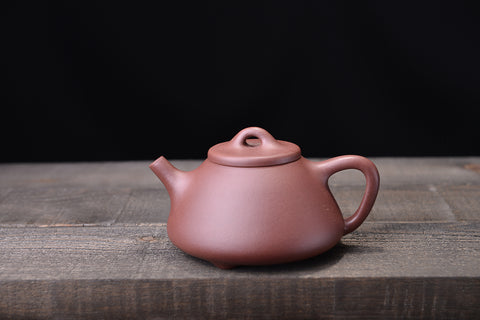
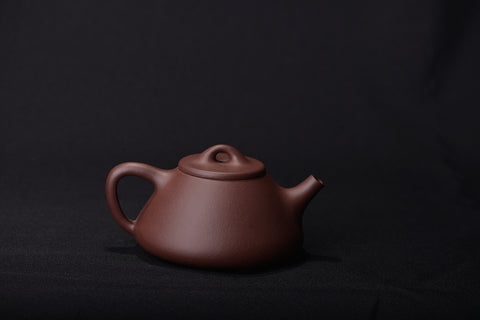
5 . The essence, spirit, spirit and rhyme of the purple clay teapot. A truly excellent purple sand teapot not only has specific advantages in practical functions and aesthetics, but more importantly, it expresses its spiritual charm. Although some pots have artistic beauty, they have no charm and can only be thinly beautiful, so they cannot be called excellent purple clay pots in the true sense.


From the above five points, we can see that a good purple clay teapot is composed of the essence of mud and handwork. We hope to help teapot lovers choose a worthy purple clay teapot.
